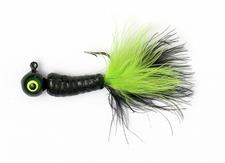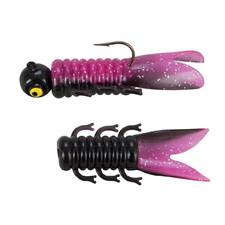 You’ve seen that tired old “fisherman’s prayer” on way too many plaques and coffee mugs. You know the one about catching a fish so big that you won’t have to lie.
You’ve seen that tired old “fisherman’s prayer” on way too many plaques and coffee mugs. You know the one about catching a fish so big that you won’t have to lie.
The real fisherman’s prayer is uttered every time one of us hooks a truly big fish: “Don’t let me screw up the net job!”
Lack of experience landing big fish is one reason we often fail to close the deal, but it’s also because we’re not as prepared as we might be.
One of the best and easiest things you can do to up the odds of success when you’re toe to toe with a biggie is to have the right net.
Choosing the right net for the occasion is easy to do but often is left to the chance of clearance sales at the local tackle shop. Picking up a net that’s convenient or cheap is a sure way to lose Mr. Big when it comes time to introduce him to your livewell.
Beckman has a line of nets that makes picking out the right one fairly easy, so all is not lost.
There are four things you need to consider when choosing a net. The most important is estimating the
largest fish you’re hoping to catch. Once that is defined, then the other choices fall into place: How big a hoop, how deep the net bag, and how long the handle.
“Really,” says Lindy pro Ted Takasaki, “you need to figure that you’ll be catching the fish of a lifetime, and how big a net do you need to land it?”
 Takasaki figures that the one time you don’t want to have a net that is too small is when it is the one big fish you have on the line.
Takasaki figures that the one time you don’t want to have a net that is too small is when it is the one big fish you have on the line.
“That’s the one you really need to plan for; every other fish is going to be smaller.”
The width of the hoop doesn’t need to be the length of the fish that you hope to catch. As a rule of thumb, one half to two-thirds the length of the trophy fish is about right.
“For a generic net, one that covers most fishing situations,” says Takasaki, “I like a hoop of 20 inches with a four-foot handle. That works for crappies, bass and a lot of walleye fishing. And if you get one of the Pen coated nets, you’ve got the best of all combinations.
“However, when I’m walleye fishing in the Great Lakes where the average walleye is a big fish, then I’d choose a net with a 26-inch hoop, and select a handle based on whether I was trolling or not.
“A four-foot handle with a sliding, three-foot extension is about right, although on a larger boat, I think the six-plus-three handle would be even better.”
The idea is that longer handles give you a better shot at scooping a fish before it gets close to the boat and makes that last-minute lunge that always seems to involve other lines.
Selecting the right hoop size should come with a warning: the larger the hoop, the more difficult it becomes to move, something that becomes a factor when you’re trying to intercept a fish that has made a last-second bat turn.
Choosing the right size net is a balancing act between hoop size (and attendant maneuverability) and bag depth. You can have a smaller hoop for big fish if the bag is big (long) enough to capture it.
A good example of the balance hoop and bag can be seen every year on Alaska’s Kenai River. The guides there (most of whom use Beckman nets it should be noted) routinely net salmon 50, 60, even 70 inches long. However, the hoop size they select is the largest Beckman makes: 36 inches. They balance this with a bag that is 65 inches deep.
 This combination lets the guides net chinook salmon in the 60-pounds-plus size with no problems. If you had a net with a much larger hoop diameter, you’d find it difficult to maneuver, harder to store on the boat, and requiring arms like Arnold to use.
This combination lets the guides net chinook salmon in the 60-pounds-plus size with no problems. If you had a net with a much larger hoop diameter, you’d find it difficult to maneuver, harder to store on the boat, and requiring arms like Arnold to use.
How does a net with a relatively small hoop capture large fish, fish that may be twice as long as the hoop is wide?
It’s simple, once you think about it. Fish aren’t sticks, and they are extremely flexible. Once you get the bulk of the fish’s mass inside the hoop, say half or two-thirds its length, then a simple lift of the net results in the rest of the fish sliding in, bending in the sinuous way fish have. In other words, get the fish in the net, and the fish simply folds up, conforming to the shape of the bag.
And that is why bag size (read that depth) is so important: the depth of the bag is what captures large fish. Beckman’s offers bags from 28 to 65 inches in its original line and 18 to 40 inches in its Pen and Pen Fin Saver nets.
The last consideration in regards to size is handle length. As a rule of thumb, you should choose the longest handle you will likely need for the type of fishing you’re doing. For walleye fishing that doesn’t involve trolling, a four-foot handle is fine in most situations. A six-foot handle often is better, though, especially with larger fish and in rougher weather when it’s difficult to pull the fish toward the boat.
The downside of a six-footer is that this handle does take up a lot of room in the boat; that is, it does if it’s fixed. However, Beckman has two options: a four-foot handle that extends another three feet to seven feet total, and a six-foot handle that also extends three feet.
When you’re dealing with really big fish—muskies or salmon, stripers or steelhead, a fixed, six-foot handle is the best option. Big fish will see the boat, and hit the ejection button immediately. Too many big fish have been lost because the net-handle challenged didn’t have the ability to make their scoop before the fish left the scene.
Why have fixed handle lengths in this situation? When you’ve got a really big fish on the line, you don’t want to be messing around extending a handle. You want to be ready.
Another thing you need to think about is whether the net should have coated mesh or not. The original Beckman nets have a dark mesh (less alarming to fish) that is uncoated. The Pen and Pen Fin Saver nets come with black, coated mesh. Choosing one over the other is a personal thing depending upon the kind of fishing you do.
Some fishermen feel the coated nets are too stiff, while others like the fact that the coated nets tend to shed hooks, making the unhooking process a whole lot easier.
“I like the coated mesh because it is so much easier, especially when I’m fishing with crankbaits,” says Takasaki. “And the Fin Saver nets are much better if you’re releasing fish—an important point for tournament anglers.”
Whether you fish for tournaments or for the pan, one thing is sure: your prayers will be answered when you reach for a Beckman net. All right, maybe that’s too strong. But what will be true is you’ll have the best landing net for the situation, and that’s no exaggeration.
Hey....Are you still Reading this?
Just copy and paste that into the coupon code field after you've selected your net and proceeded to checkout.
Got any good fishin' stories? Share them below in the comments section, or if you want to be featured in the next post, or just want to talk fishing... Email me!




















